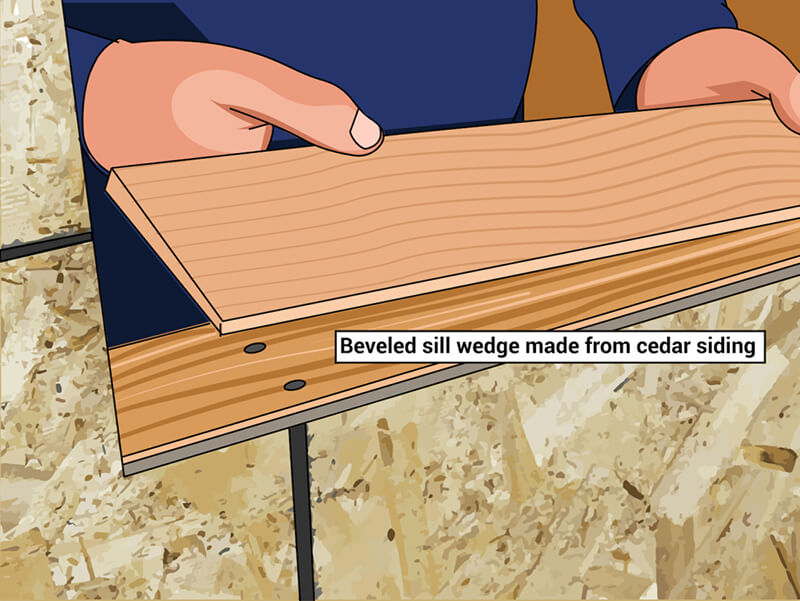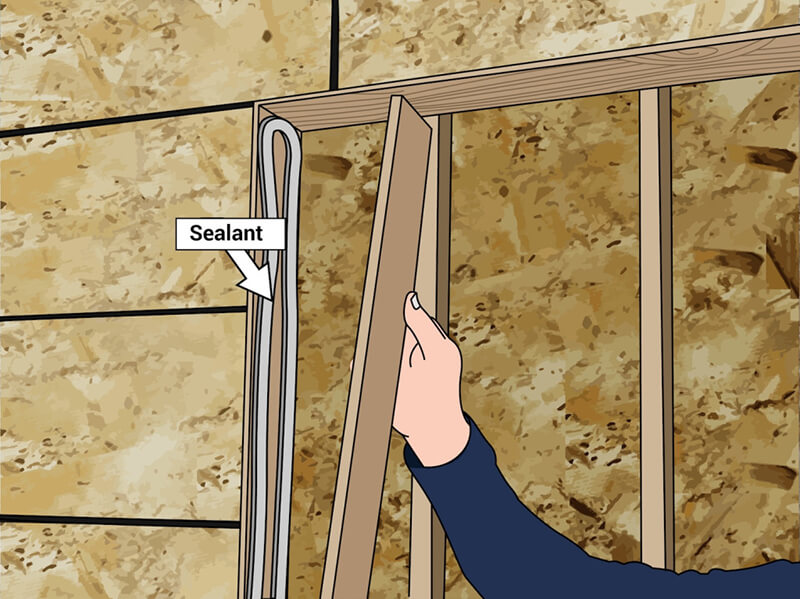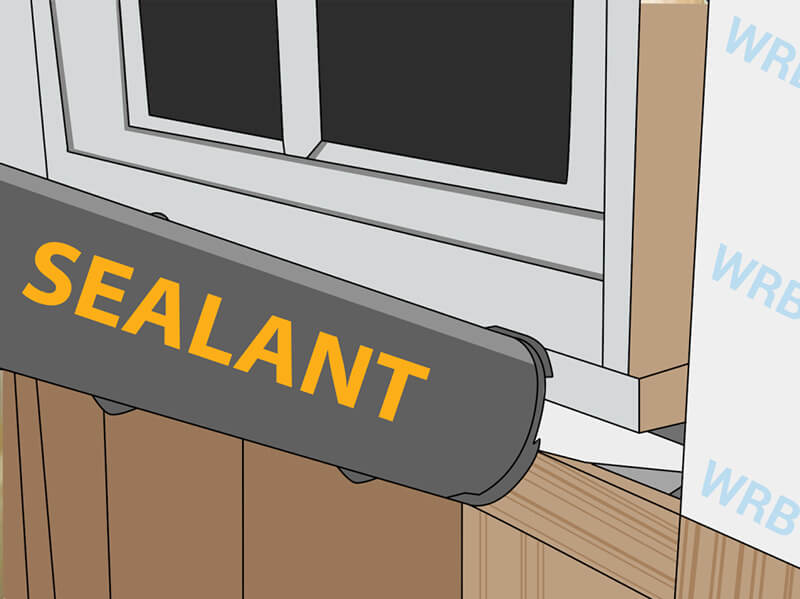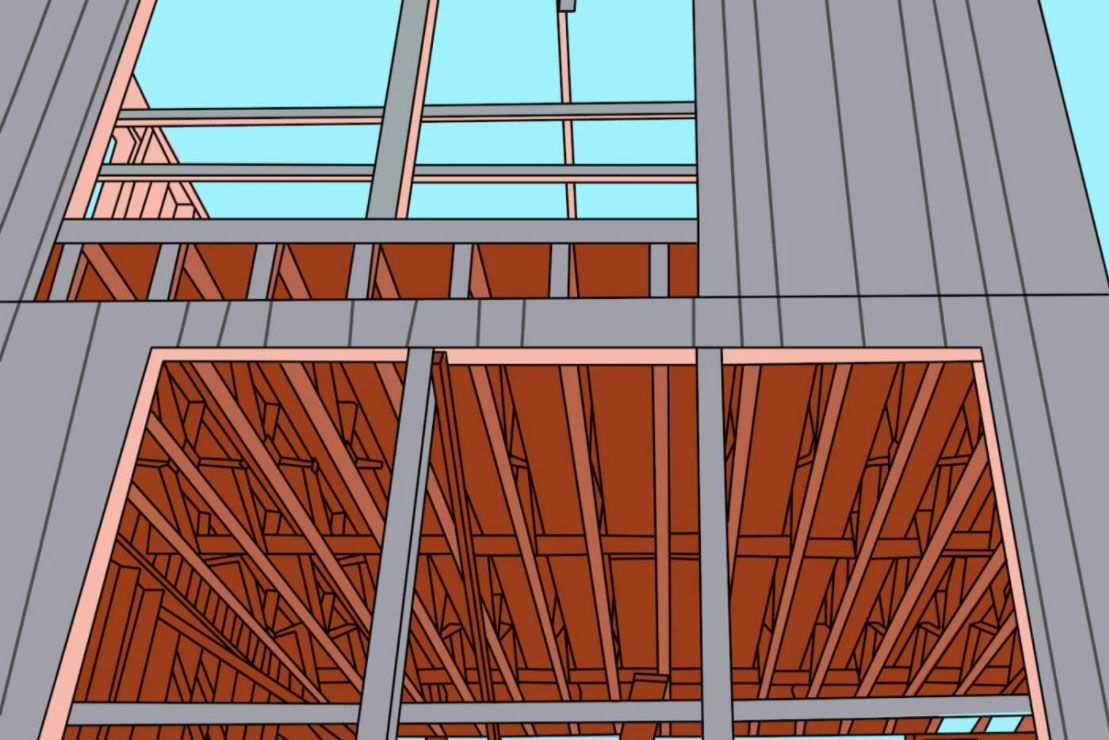SPONSOR CONTENT

A perfect window installation starts with a perfect rough opening
Many window installation headaches and mistakes can be eliminated before the windows are even delivered to the jobsite. Whether you are installing a window in an existing wall or in a new construction project, this article will teach you how to build the perfect rough opening, how to adjust an existing opening, and how to properly measure a rough opening for a hassle-free window installation.

Check for plumb and level
When measuring an existing opening, it’s not enough to measure just the width and height. Measuring all four sides is better, but even that’s not adequate. If the sill and header are significantly out of level, or the jack studs are not plumb, the opening could be a quadrilateral (rectangle with four right angles) that’s rotated one way or the other. Also, the opening could be in the shape of a parallelogram. If the opening is a rotated-quadrilateral or parallelogram, the window unit will need to be rotated within the opening which will require a smaller window to maintain minimum reveals at the corners or will require you to increase the size of the rough opening (see below). The only way to discover if the opening is a rotated-quadrilateral, or in the shape of a parallelogram, is to check that all four sides are plumb and level before you measure.
Is the wall plumb?
The walls on old houses are often tilting one way or the other or twisted. In many cases, there’s not a lot you can do to fix a crooked wall, but you need to know the condition of the wall before you install a window. If the bottom of the wall is pushed way out, you’ll want to push the bottom of the window in when you install it. This will prevent the window from leaning back, which will expose the face of the window to a lot more rainwater than it was designed for.
If the wall on one side of a window rough opening is out of plumb while the other side is perfectly straight up and down, installing the window without pushing one corner in or holding another out will result in a twisted window that will likely function poorly.
The goal of every installation is to end up with a window that operates effortlessly and has perfect weather-strip alignment. But in the real world, sometimes circumstances mean you have to reach for the happy medium between a window that works acceptably well and one that’s not so far off the wall plane that the trim carpenter needs to shave an inch off one of the jambs so the casing sits flat on the wall.

Slope the sill
The sill on a rough opening should be sloped so it can direct any water that penetrates the building envelope back to the outdoors. This can be accomplished on an existing opening by shaving down the outer edge of the sill with a planer and/or reciprocating saw. Another option is to add a sill wedge (above) or sloped rigid pan after the rough opening has been framed in. If you do install a sill wedge or sloped pan, don’t forget to account for their thickness when measuring the rough opening for the window.
When framing a new window rough opening, the sill can be sloped by cutting the top of the cripple studs at an angle. When taking this approach, remember that even a 5-degree slope will cause a 2×6 sill to protrude past the other framing members, which could cause the sheathing to bulge out. Avoid this by ripping about 1/8-inch or 3/16-inch off the whole length of the sill at the same angle as the top of the cripplers were cut.

Make a rough opening bigger
In a perfect world, every window sent to every jobsite would fit every intended rough opening perfectly. But that’s NOT the world we live in. Sometimes, alterations need to be made when a window rough opening is too small. Here are some helpful tips if you need to cut a rough opening bigger:
Think about how the window is going to line up with other windows or architectural features both inside and outside the home. If you need an extra 1/2-inch of space to accommodate the height of the new window and the other windows nearby sit a little lower, than shave 1/2 inch off the sill.
When a slight up or down adjustment to the window doesn’t matter, it’s always best to remove material from the sill instead of removing it from the top side and weakening the header. If you do need to cut deep into a header and the reduction of insulation space is not a concern, you may be able to maintain load requirements by making the header thicker.
If the choice is cutting into the top side of one jack stud or the bottom side of the other, choose the bottom so you don’t reduce the amount of wood supporting the header.
If you do end up fileting a jack stud down considerably, you may need to sister a common stud on the back side of it and install some sort of metal strap, hanger, or structural screws to add header support. When in doubt, consult a building official or engineer.
Make a rough opening smaller
If a rough opening is too large, it will be difficult if not impossible to fasten the nailing fins to the wall, and you don’t want to rely on the stability of shims that are piled two inches thick. Here are some tips for making a rough opening smaller:
Pay attention to other nearby windows and architectural features just as you would when making an opening bigger. You don’t want to raise a window out of plane with its neighbors or shift a window to the left or right and change the middle reveal between a series of windows the same size.
The best way to fill in a window rough opening is by installing additional lumber/boards. For example, if you need to make the height 1/2 inch smaller, rip down a 1/2-inch strip of plywood and install it on the sill. Add a 1x board if you need to decrease the size by 3/4 inches. If you need to reduce it by 1 inch than add two strips of 1/2-inch plywood, etc. If the size of the window needs to be reduced more than 3-inches, it’s best to frame in the opening and add sheathing.
Add a bead of sealant or construction adhesive around the perimeter of any filler board before installing it into the opening. Use an exterior-grade sealant/adhesive that will remain flexible and won’t shrink. This will help prevent water infiltration and add holding power (above).
Run the filler boards flush to the outer edge of the sheathing. For example, if the wall was framed with 2x6s and covered with 7/16-inch OSB, then rip down the filler strip to 5-7/16 inches (5-1/2” + 7/16” = 5-7/16”).
If all four sides of the opening require filler boards, install the top and bottom first and then wedge the sides between them. The side boards will support the top board like jack studs support a header. They will also prevent the lower board from curling up at the edges when the weight of the window settles down on the bottom shims.

Back dam
A back dam on the sill will help prevent unwelcomed water from reaching the wall cavity and the interior of the building. Adding a small strip of wood to the interior edge of the sill and then covering it with sill flashing tape is a perfectly acceptable way to create a back dam. The one problem with this method is that the strip of wood can interfere with sealing and insulating the bottom side of windows that have the jambs attached to the frame. Rigid pan flashing with built-in back dams can also create this problem. If the windows you’re installing do have the jambs attached, consider creating a back dam with a large bead of sealant after the window is installed (above).
Talk about it
If you’re in charge of installing the windows but not framing the openings, have a conversation with the framers before the project gets underway. Let them know what your idea of a “perfect” window rough opening looks like. Also, have a talk with the siding installers and trim carpenters. Ask them if they have any special concerns about flashing, clearances, or window placement. When working with modern building materials and striving for “best practices,” it’s crucial that all the subcontractors are on the same page.
—This article is from Marvin, one of ProTradeCraft's advertisers. It first appeared on Marvin's blog, where there are a lot of other good technical resources.













